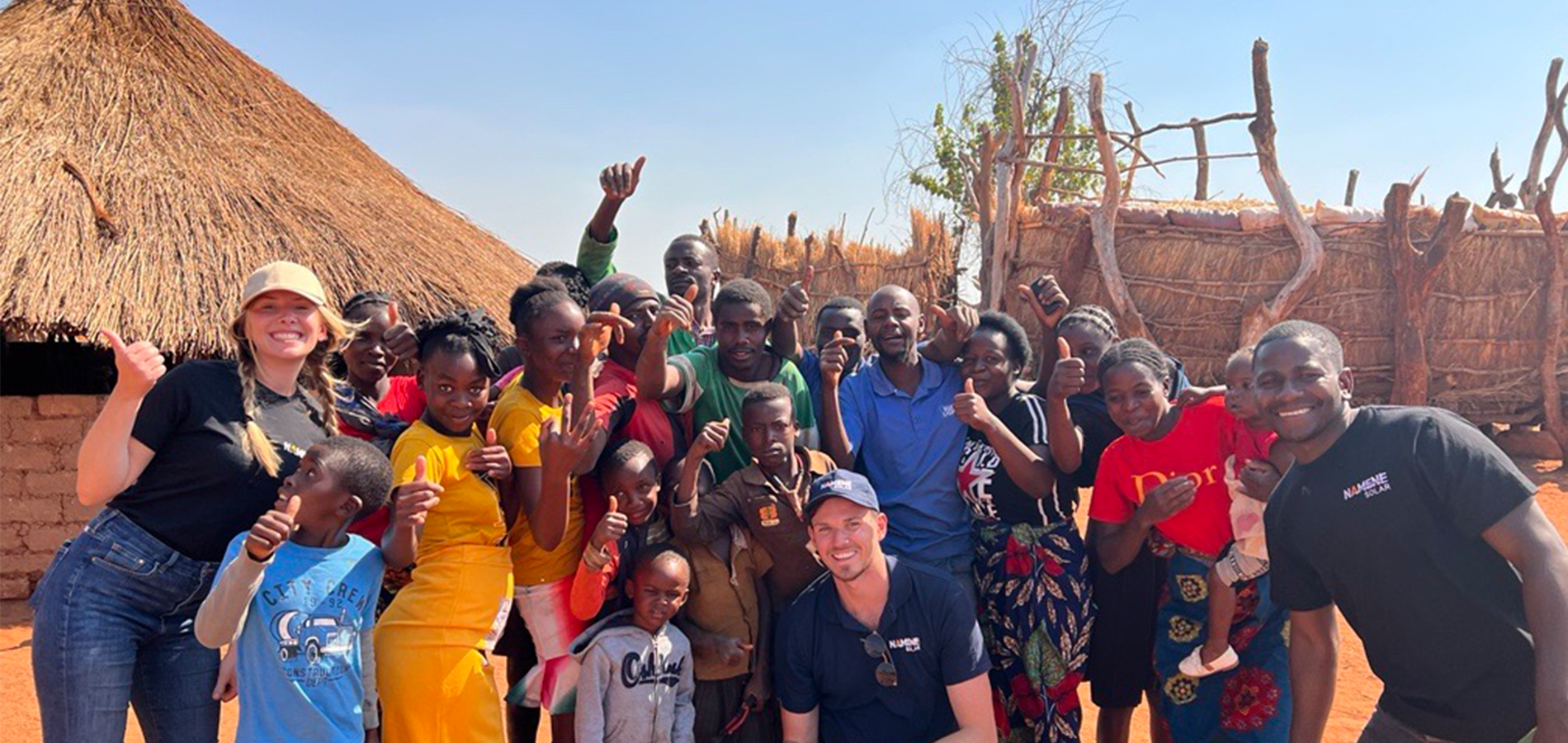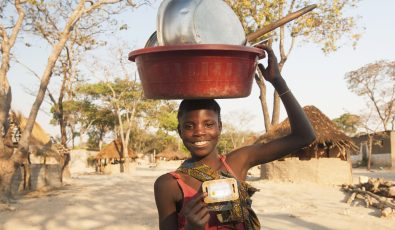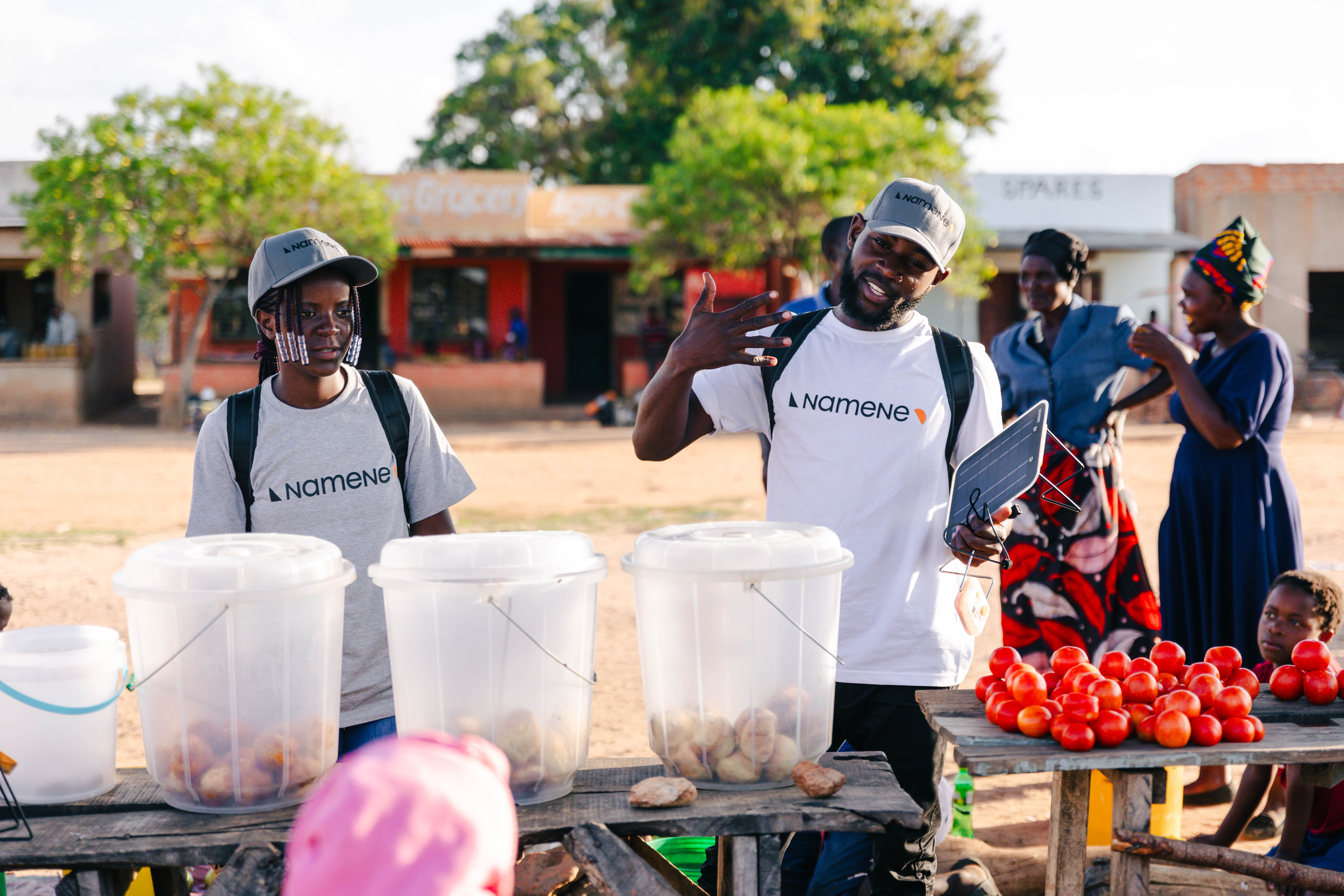One million solar lights: How clean technology and carbon finance can help end energy poverty
By Patrick Lagrange, CEO of Namene
On Sunday 24 September, a family in the village of Salumbwe in the Mwandi district in Western Zambia received a solar light – swapping their toxic and unsafe kerosene lamp for a clean, bright and renewable source of light.
This was the millionth light sold by Namene under our carbon projects*, which enable us to offer off-grid households our durable pico lights at a discount of up to 70% on their retail value, through the sale of high-quality carbon credits based on avoided kerosene emissions.
Namene is a business that believes people and planet come first, and reaching this milestone means a lot to everyone working in our company. But even more importantly for each of the 650,000 families or so owning one of our lights, access to solar lighting is life-changing – removing fire and respiratory hazards from their homes and extending the daily hours in which they can safely work and study.
About 10,000 families purchase a Namene light each week, and in two years, we have gained significant market shares for pico lights in the countries where we currently operate our carbon projects – Namibia, Zambia, Zimbabwe and Lesotho. This rapid growth proves that affordability is the main factor in unlocking access to clean energy for those who need it the most.
Harnessing clean technology to empower communities
The challenge is huge: the International Energy Agency estimates that there are still 760 million people without access to electricity today – with a vast majority living in remote communities in Africa and Asia. As it stands, the potential to transform lives at this scale through simple, clean and durable technology remains largely untapped. But we are here to change this.
Our approach puts ‘last-mile’ customers front and centre. We work with them to understand their needs and constraints and to design the high-quality products at the lowest cost possible. Our devices are designed to last, and are repairable. We provide tailored after-sales care to our buyers, wherever they live, and work with local distribution and maintenance partners who are trusted by those communities. And in contrast to most product manufacturers, our business model associates positive outcomes for our customers with positive outcomes for our company: a lost or damaged Namene light does not represent an opportunity for us to sell another, but a loss under our carbon programme, as it requires us to replace the light to retain its associated carbon certificate.

About 10,000 families purchase a Namene light each week, saving money and carbon emissions.
We have taken the time to refine a model that works, and we are now looking ahead with confident ambition. We are broadening our range of products and will start distributing efficient cookstoves under our climate projects later this year. We are also expanding to new regions and countries. Our goal is to deploy up to 15 million lights and half a million cookstoves by 2030 – harnessing clean technology to empower up to 40 million people who are neglected by current models.
Trustworthy and effective carbon offsets
What Namene’s approach also demonstrates, is that we can make the voluntary carbon market (VCM) work as a force for good. Issuing carbon credits is what allows us to bring quality products to those on the lowest incomes, and the financial benefits flow to them first and foremost: for each dollar invested in our climate projects, each family saves over $70 over five years from no longer having to spend on kerosene or candles. This is in addition to an annual reduction of at least 92 kg of CO2, and tangible contributions to six SDGs measured by our certifier Gold Standard, who currently has the most demanding requirements on the VCM.
The current scrutiny on the role and impact of carbon offsetting, and its revelations on the failures of the VCM so far, are necessary and welcome. But as the latest UN Global Stocktake makes clear, our window for changing course and securing a stable climate is rapidly closing. The stakes could not be higher, and we need all the tools in the box to shift financial flows towards mitigation and rapidly close the climate funding gap. The VCM is one of those tools – provided it is scaled and shaped around high-quality carbon credits only, with verifiable environmental and social benefits, and used solely to compensate for unavoidable emissions.
It can be done – indeed it must be done – and Namene’s progress is a living example of the impact that can be made when carbon finance is leveraged with maximum integrity to accelerate the transition to net zero and alleviate energy poverty. This is a point we will make next month when we take part in the sixth edition of the Paris Peace Forum as a selected solution towards ‘making carbon offset markets trustworthy and effective’ – rallying actors from all sectors to seize the potential for a just and fair energy and climate transition, where no-one is left behind.
Namene means ‘new dawn’ in Oshiwambo, a language spoken in Namibia. Now more than ever, I believe the future can be bright, clean and equitable – and now is the time to raise our collective ambition to secure that future.
* In total, Namene has deployed approximately 1.5 million lights through its carbon projects as well as other channels such as corporate CSR programmes, NGO partnerships and direct sales.
Related Stories

Drive Sustainable Change with Namene Carbon Credits
As the urgency of climate change grows, businesses can take responsibility for their emissions and meet sustainability goals with Namene's Carbon Credits.
Read More
Empower women to power Africa: women driving the energy transition
At Namene want to honour and champion the essential role women play by connecting their communities to energy access, becoming solar entrepreneurs and leading the charge in energy companies.
Read More
How Namene Does things Differently
Zambia Country Director, Chanda Mulenga shares lessons and strategies that have enabled our success deploying solar lights to some of the most remote communities.
Read More